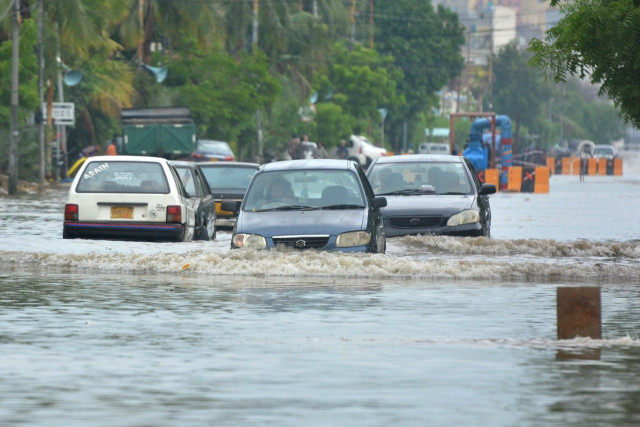Sindh Chief Minister Syed Murad Ali Shah chaired a high-level meeting at the CM House to review and enhance preparations for the upcoming monsoon season, issuing directives to all relevant departments and agencies to remain on high alert.
The meeting, attended by provincial ministers Sharjeel Memon, Nasir Hussain Shah, Saeed Ghani, Jam Khan Shoro, Zia-ul-Hassan Lanjar, Muhammad Bux Mehr, and Muhammad Ali Malkani, included key officials such as Karachi Mayor Murtaza Wahab, Inspector General of Police Ghulam Nabi Memon, Commissioner Karachi Hassan Naqvi, provincial secretaries, Chief Meteorologist Aamir Haider, and representatives from Disaster Management, Water Board, K-Electric, Sindh Solid Waste Management Board, and Corps V.
Weather Forecast & Flood Risks
The Pakistan Meteorological Department (PMD) forecasted an early formation of a “low-pressure system” in southern Pakistan, predicting normal to above-average rainfall in July and August. Upper Sindh is expected to see a 10% increase in rainfall, while southern Sindh, including Karachi, may experience a 20-30% surge. The meeting highlighted potential flood risks in lower Sindh, particularly due to overflow in the Indus River and increased water flow from hilly streams and nullahs, which could impact vulnerable areas.
Chief Minister’s Directives
Chief Minister Shah instructed all departments to devise a coordinated emergency response strategy, emphasizing the completion of the cleaning of storm drains, checking of pumping stations and ensuring readiness of rescue teams. He stressed the importance of seamless inter-agency communication and swift response mechanisms to mitigate monsoon-related challenges effectively.
Karachi’s Drainage Preparations
It was informed that drain cleaning operations began on June 20, 2025, and will continue until September 15, 2025. Major blockages and culverts have been cleared, with priority given to critical areas such as Tariq Road, KPT, Submarine, and Mehran underpasses. Emergency response teams are on high alert across Karachi. However, concerns were raised about the city’s inadequate infrastructure to handle rainfall exceeding 45 mm per hour, particularly in Korangi, where plastic waste and encroachments have clogged drainage systems.
Solid Waste Management
The Sindh Solid Waste Management Board briefed the Chief Minister on its monsoon preparedness, including the deployment of additional machinery and staff equipped with rainproof clothing and tools to ensure effective drainage. A public awareness campaign is underway to educate residents on precautionary measures during potential flooding. The board also assured uninterrupted garbage collection and disposal during the monsoon season.
Flood Mitigation Measures
The Irrigation Department highlighted that lower Sindh, particularly the deltaic regions, faces significant challenges during floods due to high water levels in the Indus River, compounded by torrential rains and runoff from hilly streams. Historical data indicates that Manchhar Lake’s capacity is often insufficient during severe floods. To address waterlogging and salinity, the Sindh government has initiated SCARP (Saline Drainage and Reclamation Project) schemes to manage groundwater levels and reduce soil salinity. Active pumping stations across the province are being maintained to handle emergencies, with ongoing efforts to desilt drains and repair infrastructure.
Lessons from 2022 Floods
Following the devastating 2022 floods, rehabilitation efforts have focused on repairing river embankments and bridges to support the local economy and enhance resilience against future floods. As Sindh braces for the 2025 monsoon, Chief Minister Shah reiterated that continuous investment in flood prevention infrastructure remains a top priority to minimize potential damages.
The meeting highlights Sindh’s commitment to a proactive and coordinated response to the monsoon season. With enhanced drainage systems, active emergency teams, and public awareness initiatives, the provincial government aims to safeguard lives and property while addressing the region’s longstanding infrastructural challenges.


Leave a Reply